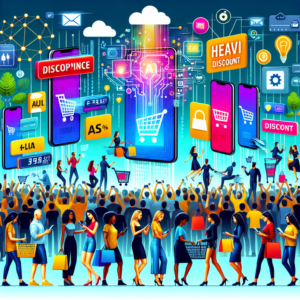
Understanding B2B Ecommerce Trends and Insights for 2023
Introduction: The Rise of B2B Ecommerce
In recent years, the B2B ecommerce landscape has undergone significant transformations, driven by technological advancements, shifting customer preferences, and the impact of the global pandemic. As we move through 2023, it’s essential for businesses to stay updated on the latest trends and insights that are shaping this dynamic marketplace. This blog post will explore the key trends in B2B ecommerce for 2023, offering valuable insights that can guide your business strategy in this evolving environment.
1. The Accelerated Shift to Digital
The adoption of digital platforms for B2B transactions has accelerated dramatically. Many companies that previously relied on traditional methods have pivoted to online systems, realizing the need for digital solutions to streamline their operations.
Key Drivers of Digital Transformation
- Remote Work Adaptation: The COVID-19 pandemic forced many businesses to adapt to remote working conditions, leading to a rise in digital interactions.
- Increased Customer Expectations: B2B buyers now expect a seamless online shopping experience similar to what they encounter in B2C ecommerce.
- Emerging Technologies: Innovations such as artificial intelligence (AI) and machine learning are enhancing the ecommerce experience through personalization and automation.
2. Personalization: The New Norm
In 2023, personalized customer experiences have become a primary focus for B2B sellers. With advanced data analytics tools, companies can gather insights into customer behavior and preferences, enabling them to tailor their offerings accordingly.
Implementing Personalization Strategies
- Customer Segmentation: Identifying distinct customer segments allows businesses to create customized marketing strategies that cater to specific needs.
- Dynamic Content: Utilizing data-driven approaches to present personalized content based on user interactions and purchase history.
- Customized Pricing: Providing personalized pricing models based on factors such as order volume and customer loyalty further enhances buyer satisfaction.
3. Omnichannel Engagement
Today’s B2B buyers are not limited to a single channel; they engage with brands through various touchpoints. This omnichannel approach necessitates businesses to ensure consistency across all platforms, enhancing customer experiences and boosting sales.
Creating an Effective Omnichannel Strategy
- Integration of Platforms: Businesses should integrate their online and offline channels to provide a streamlined experience for customers.
- Real-Time Communication: Leveraging chatbots and customer service representatives to provide immediate assistance can significantly improve customer relations.
- Data Synchronization: Collecting and analyzing data from all touchpoints ensures that marketing efforts are coherent and data-driven.
4. The Impact of Mobile Commerce
As mobile technology continues to advance, B2B ecommerce is witnessing a surge in mobile transactions. Business professionals are increasingly using their smartphones to place orders and engage with suppliers.
Optimizing for Mobile
- Responsive Design: Ensuring that your ecommerce site is mobile-friendly can greatly enhance user experience and boost conversion rates.
- Mobile Payment Solutions: Offering secure mobile payment methods is pivotal for gaining the trust of customers on the go.
- App Integration: Developing apps for easier navigation and quicker purchasing can encourage repeat business.
5. Emphasis on Sustainability
Today’s consumers are increasingly concerned about the environmental impact of their purchases. B2B companies in 2023 are placing a higher emphasis on sustainability to meet these demands and stay competitive.
Strategies for Sustainable Ecommerce
- Sustainable Sourcing: Partnering with suppliers that prioritize eco-friendly practices can enhance your brand image and appeal to conscious consumers.
- Transparent Supply Chains: Providing clear information about sourcing and production methods can help build trust with your customers.
- Green Packaging: Utilizing recyclable or biodegradable packaging materials can significantly reduce your waste footprint.
6. Increased Focus on Security and Compliance
As B2B ecommerce grows, so do concerns about data security and regulatory compliance. Businesses must prioritize protecting sensitive information while ensuring they adhere to established guidelines.
Best Practices for Security and Compliance
- Data Encryption: Utilizing encryption for customer data ensures that sensitive information remains secure during transactions.
- Regular Audits: Conducting audits can help identify vulnerabilities and enhance overall security posture.
- Adhering to Regulations: Staying updated with regulations such as GDPR helps businesses avoid penalties and build customer trust.
Conclusion: Preparing for the Future of B2B Ecommerce
As the B2B ecommerce landscape continues to evolve in 2023, understanding and adapting to these trends is crucial for sustained success. From embracing digital transformation and personalization to focusing on sustainability and security, businesses must remain agile and responsive to the changing preferences of their customers. By implementing the strategies discussed in this blog, you can position your company as a leader in the B2B ecommerce space and drive sustainable growth in an increasingly digital world.



